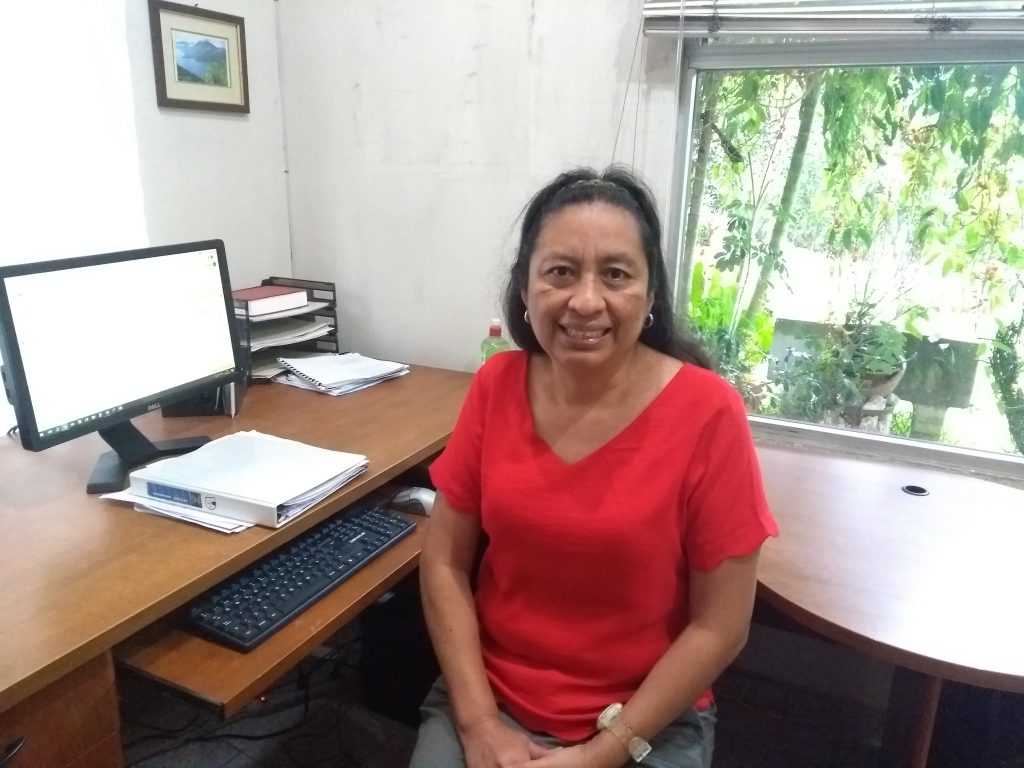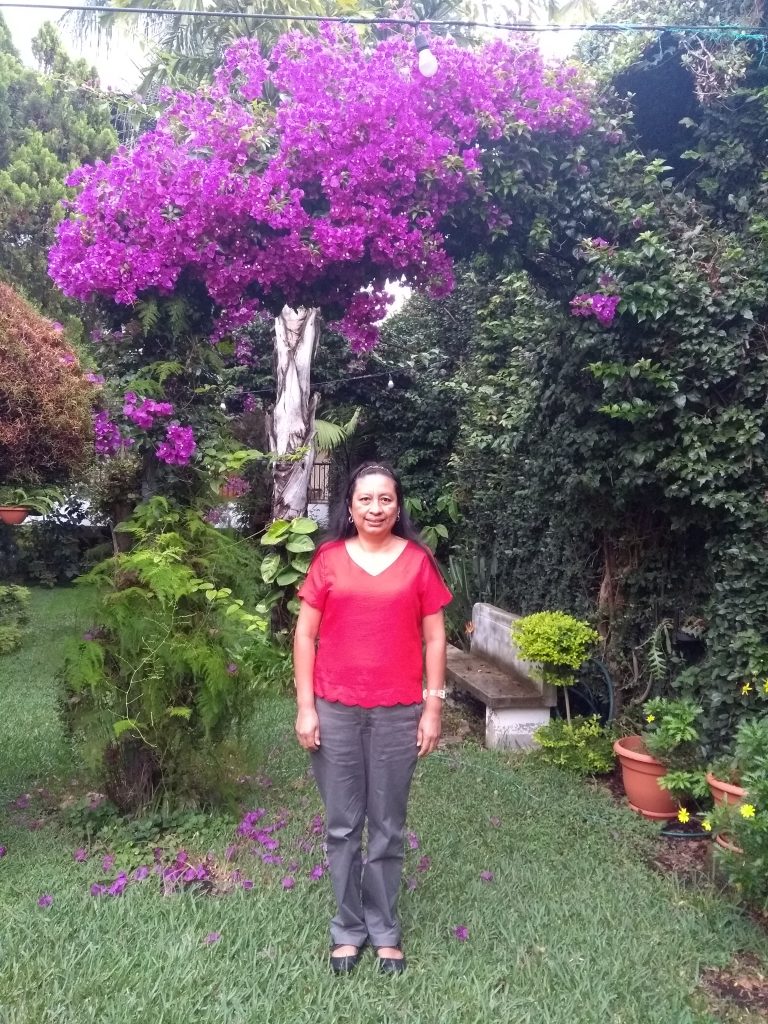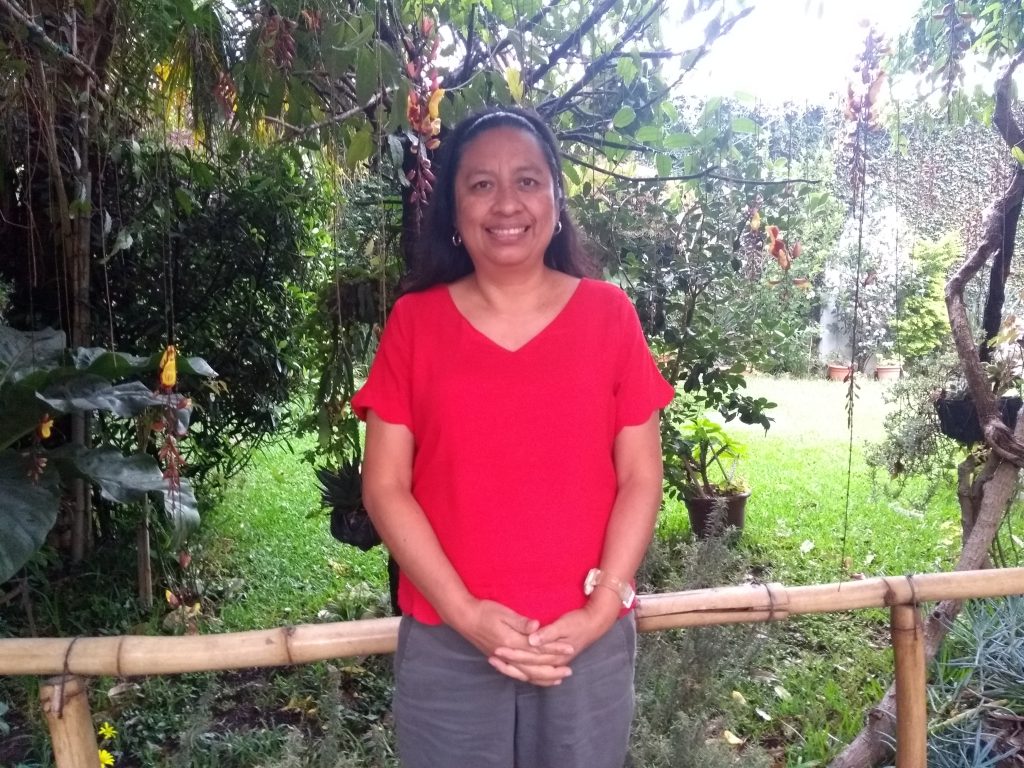Lucía Camel de Ocheita, Spanish Program Coordinator
JOURNEY TO SEMILLA
I was invited to work at SEMILLA by Villeda, a dedicated teacher in Guatemala with an entrepreneurial spirit. She asked me to teach Spanish as a second language. Villeda shared Elena and Amzie Yoder’s dream of bringing volunteers, university students, teachers, pastors, and missionaries to Guatemala to learn the language and serve people in Guatemala and Central America. The hope is for SEMILLA to help eliminate language as a communication barrier for the students and visitors who come here. I was very excited about this mission and began my work as an educator at SEMILLA.

Lucy Camel sits at her office desk.
EAGER INTERCULTURAL LEARNERS
I am thrilled to see our students so eager to learn and making the most of their time at SEMILLA, reaching the goals they came here to accomplish. Generally, their dreams are educational – perfecting their Spanish, or learning more about the culture. In the future — in one way or another — this experience will be of great benefit to many people in different directions. Some student testimonials have described their achievements after completing their work at SEMILLA, and they are very happy.
I love to see how students learn the language and how to engage with another culture. They learn about the social problems and challenges of Guatemala. They also meet new people and visit new places, strengthening relationships with friends that will often last a lifetime.

Teaching is about joining students in their learning process.
SPANISH AS A TOOL
Students come to learn Spanish for a variety of reasons, but in the end, each of them realize that knowing another language is a strength in their lives. They can apply it in various fields: working with migrants, in hospitals, or as translators, lawyers, or teachers. Knowing Spanish is a door that opens up many opportunities. The age at which students visit us is vital, too; they are making important decisions in their lives, such as career, work, or continuing studies. After their experience in the CASAS program, they often take steps toward some of these goals.
I always think teaching Spanish isn’t just about getting the student to communicate fluently. Teaching is also about joining students in their learning process, sharing how they live in this context, and having an experiential visit. I know this work isn’t done by any one individual; it requires teamwork. A student told me that she worked as a lawyer in a justice organization helping migrant children who had come to her country. She said she knew she could not help every child but that, in each case, she had a better understanding of the context from which those people came.
WORKING THROUGH DIFFICULT TIMES
Since I started, it’s been a constant learning process with everything we do focused on better serving our students. There are always new goals to achieve. We even taught classes online during the pandemic, which was a significant achievement for the CASAS team.

AN EMPOWERING COMMUNITY
From the beginning of my time at SEMILLA, I knew this was a place where the staff were treated with fairness, respect, and trust. The administration always motivates us to go to the next level, working as a team and fighting to reach a goal.
SEMILLA is different from other places because our contributions, and value as people are consistently recognized. We do not work like machines; instead, we understand that we are working with students who not only want to learn a language, but also about culture. Moreover, I know every student leaves with an experience to tell.
